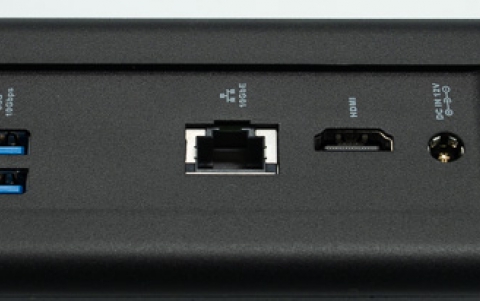
IBM Scientists Closer To Using Spintronics in Computing
Aiming to use electron spins for storing, transporting and processing information, researchers from IBM and scientists at ETH Zurich revealed the first-ever direct mapping of the formation of a persistent spin helix in a semiconductor.
Until now, it was unclear whether or not electron spins possessed the capability to preserve the encoded information long enough before rotating. Unveiled in the peer-reviewed journal Nature Physics, scientists from IBM Research and the Solid State Physics Laboratory at ETH Zurich demonstrated that synchronizing electrons extends the spin lifetime of the electron by 30 times to 1.1 nanoseconds - the same time it takes for an existing 1 GHz processor to cycle.
Today's computing technology encodes and processes data by the electrical charge of electrons. However, this technique is limited as the semiconductor dimensions continue to shrink to the point where the flow of electrons can no longer be controlled. Spintronics could surmount this approaching impasse by harnessing the spin of electrons instead of their charge.
This new understanding in spintronics not only gives scientists unprecedented control over the magnetic movements inside devices but also opens new possibilities for creating more energy efficient electronics.
A previously unknown aspect of physics, the scientists observed how electron spins move tens of micrometers in a semiconductor with their orientations synchronously rotating along the path similar to a couple dancing the waltz, the famous Viennese ballroom dance where couples rotate.
Dr. Gian Salis of the Physics of Nanoscale Systems research group at IBM Research - Zurich explains, "If all couples start with the women facing north, after a while the rotating pairs are oriented in different directions. We can now lock the rotation speed of the dancers to the direction they move. This results in a perfect choreography where all the women in a certain area face the same direction. This control and ability to manipulate and observe the spin is an important step in the development of spin-based transistors that are electrically programmable."
How it works
IBM scientists used ultrashort laser pulses to monitor the evolution of thousands of electron spins that were created simultaneously in a very small spot. Atypically, where such spins would randomly rotate and quickly lose their orientation, for the first time, the scientists could observe how these spins arrange neatly into a regular stripe-like pattern, the so-called persistent spin helix.
The concept of locking the spin rotation was originally proposed in theory back in 2003 and since that time some experiments have even found indications of such locking, but until now it had never been directly observed.
IBM scientists imaged the synchronous "waltz" of the electron spins by using a time-resolved scanning microscope technique. The synchronization of the electron spin rotation made it possible to observe the spins travel for more than 10 micrometers or one-hundredth of a millimeter, increasing the possibility to use the spin for processing logical operations, both fast and energy-efficiently.
The reason for the synchronous spin motion is a carefully engineered spin-orbit interaction, a physical mechanism that couples the spin with the motion of the electron. The semiconductor material called gallium arsenide (GaAs) was produced by scientists at ETH Zurich who are known as world experts in growing ultraclean and atomically precise semiconductor structures. GaAs is a III/V semiconductor commonly used in the manufacture of devices such as integrated circuits, infrared light-emitting diodes and highly efficient solar cells.
Transferring spin electronics from the laboratory to the market still remains a major challenge. Spintronics research takes place at very low temperatures at which electron spins interact minimally with the environment. In the case of this particular research, IBM scientists worked at 40 Kelvin.
Today's computing technology encodes and processes data by the electrical charge of electrons. However, this technique is limited as the semiconductor dimensions continue to shrink to the point where the flow of electrons can no longer be controlled. Spintronics could surmount this approaching impasse by harnessing the spin of electrons instead of their charge.
This new understanding in spintronics not only gives scientists unprecedented control over the magnetic movements inside devices but also opens new possibilities for creating more energy efficient electronics.
A previously unknown aspect of physics, the scientists observed how electron spins move tens of micrometers in a semiconductor with their orientations synchronously rotating along the path similar to a couple dancing the waltz, the famous Viennese ballroom dance where couples rotate.
Dr. Gian Salis of the Physics of Nanoscale Systems research group at IBM Research - Zurich explains, "If all couples start with the women facing north, after a while the rotating pairs are oriented in different directions. We can now lock the rotation speed of the dancers to the direction they move. This results in a perfect choreography where all the women in a certain area face the same direction. This control and ability to manipulate and observe the spin is an important step in the development of spin-based transistors that are electrically programmable."
How it works
IBM scientists used ultrashort laser pulses to monitor the evolution of thousands of electron spins that were created simultaneously in a very small spot. Atypically, where such spins would randomly rotate and quickly lose their orientation, for the first time, the scientists could observe how these spins arrange neatly into a regular stripe-like pattern, the so-called persistent spin helix.
The concept of locking the spin rotation was originally proposed in theory back in 2003 and since that time some experiments have even found indications of such locking, but until now it had never been directly observed.
IBM scientists imaged the synchronous "waltz" of the electron spins by using a time-resolved scanning microscope technique. The synchronization of the electron spin rotation made it possible to observe the spins travel for more than 10 micrometers or one-hundredth of a millimeter, increasing the possibility to use the spin for processing logical operations, both fast and energy-efficiently.
The reason for the synchronous spin motion is a carefully engineered spin-orbit interaction, a physical mechanism that couples the spin with the motion of the electron. The semiconductor material called gallium arsenide (GaAs) was produced by scientists at ETH Zurich who are known as world experts in growing ultraclean and atomically precise semiconductor structures. GaAs is a III/V semiconductor commonly used in the manufacture of devices such as integrated circuits, infrared light-emitting diodes and highly efficient solar cells.
Transferring spin electronics from the laboratory to the market still remains a major challenge. Spintronics research takes place at very low temperatures at which electron spins interact minimally with the environment. In the case of this particular research, IBM scientists worked at 40 Kelvin.





















